Sightseeing Spots
Search Results314
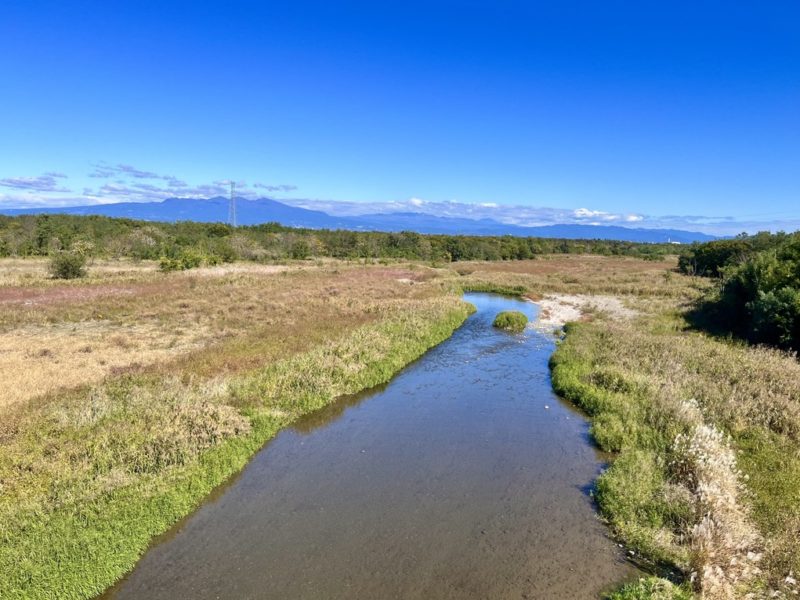
This is the site of the battle of Kanagawa, the largest field battle to have ever taken place in the Kanto region. The fierce battle took place from June 18th to 19th, 1582 on the border between Musashi (Tokyo and Kanagawa) and Ueno (Gunma) along the Kannagawa River. The battle was between Takikawa Kazumasu, lord of Ueno Umabashi Castle, and forces led by Hojo Ujikuni, lord of Musashi Hachigata Castle, and Hojo Ujinao, lord of Odawara Castle. The battle was also known as the “Battle of Kanakubohara" due to being fought in and around Kanakubo and Bisado areas of Kamisato-town.
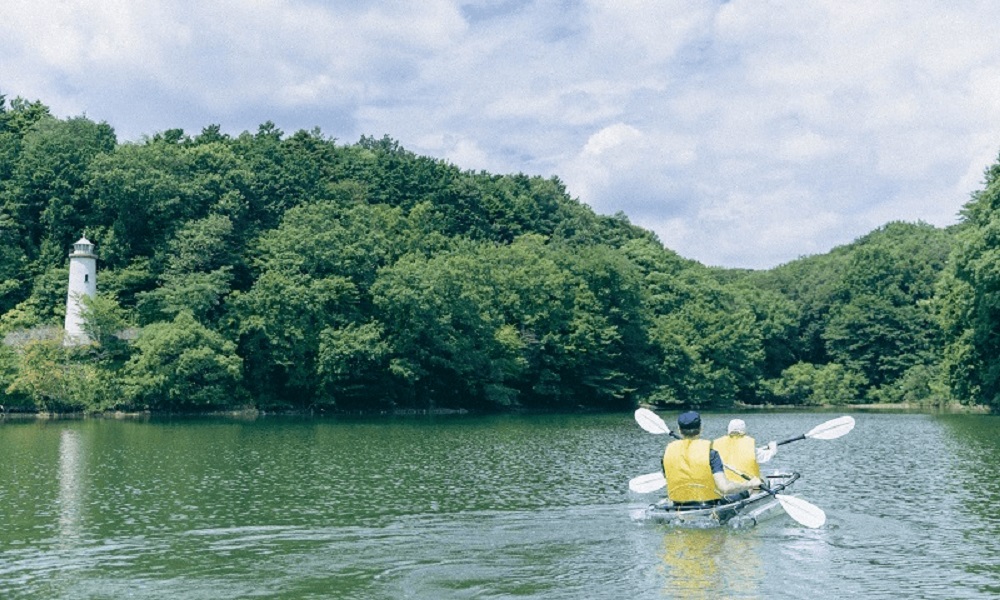
You'll spend a delightful time with family and friends at Metsa Village, whether shopping for Nordic brand goods that give you a taste of Nordic lifestyle, perusing handicrafts at the market, enjoying a Nordic meal at the restaurant, taking part in arts and crafts workshops, renting a boat to cruise the lake, or through various seasonal events. There's plenty to experience at this lakeside forest.
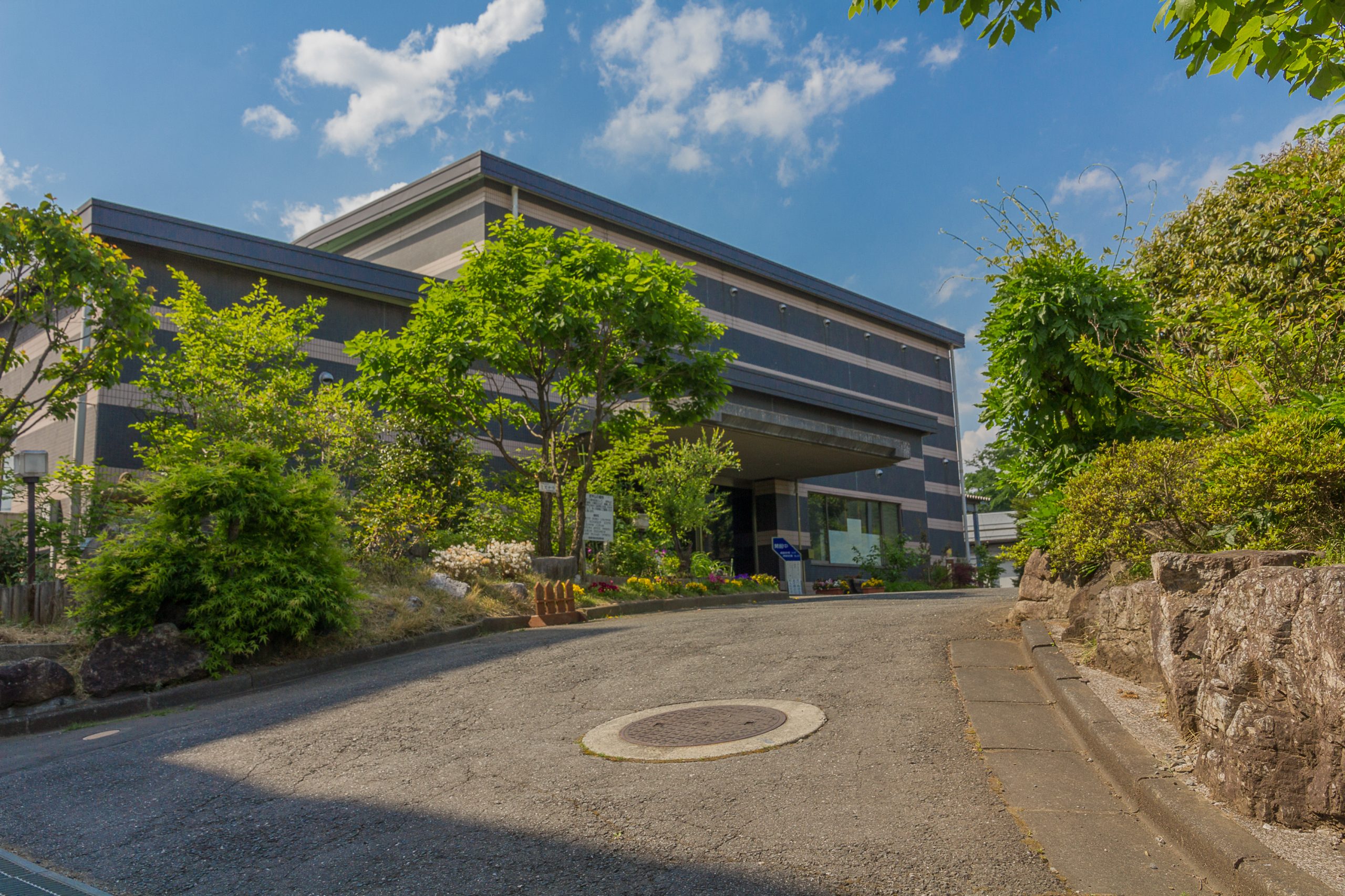
The entire cultural heritage of Yokoze Town is on exhibit at this museum. There are stage models of Yokoze’s puppet show (designated intangible folk cultural property by the prefecture), models of Bukōzanmitake Shrine Palace, specimen displays of animals and plants collected from Mt. Bukō, and historical documents that portray the transitions of Yokoze Town. In the “nature” section of the permanent exhibition room, approximately 130,000 year-old fossils of the giant Japanese elk, buffalo and wolves, which were discovered in the Negoya Limestone Cave, are on display. These fossils are very rare on a national scale.
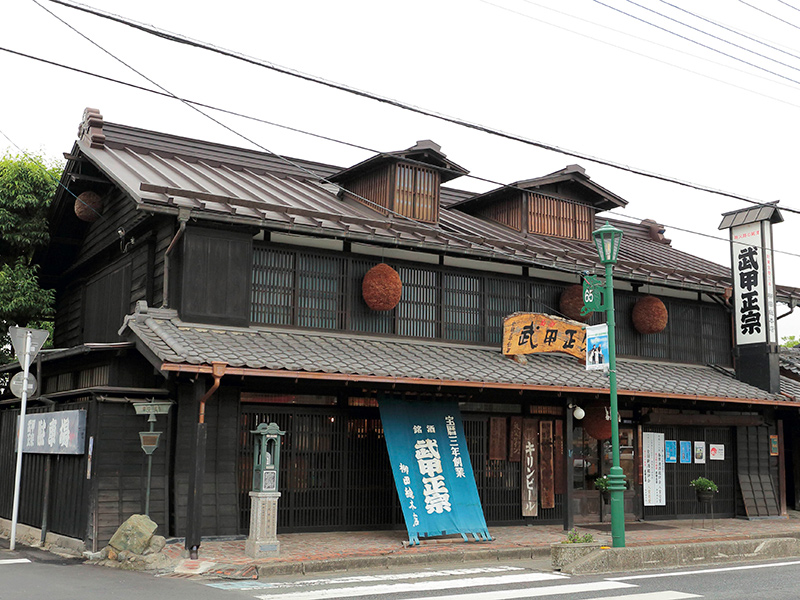
The well at our brewery, "Bushūyama Jyōryūsui" (underground water) was established as one of the hundred best mineral water sources of the Heisei Era. If you bring a container, feel free to fill it up with water and take it with you!
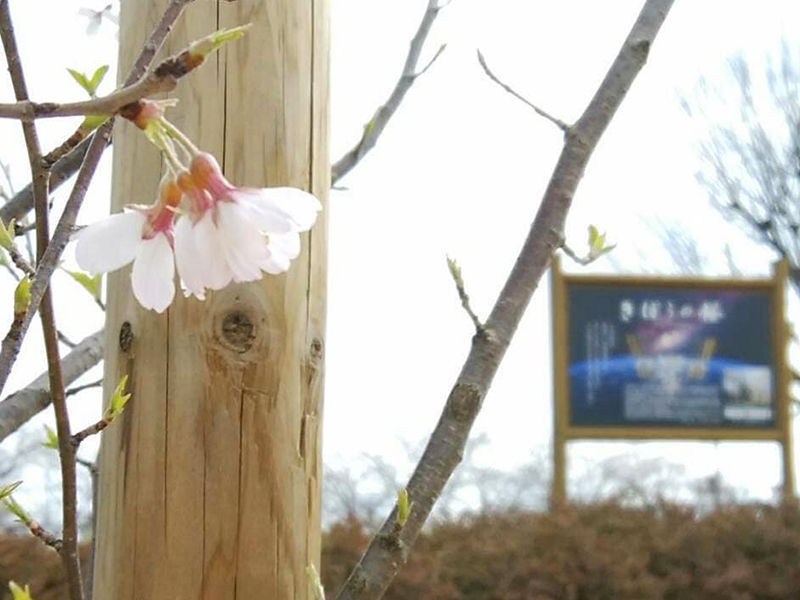
In 2008, cherry trees, which were sprouted from the seeds of the Jindai cherry tree in Hokuto City, Yamanashi Prefecture, traveled to space with astronaut Koichi Wakata, and were subsequently planted in Seki Park on April 6th, 2019 through the Kibou (Hope) Cherry Blossom Project, a project aiming to plant cherry trees in municipalities affected by the 2011 Tohoku earthquake and tsunami. The decision to plant the trees in Yoshikawa City was based on the children's communication with astronaut Kanai Yoshishige in space, the dispatching of staff to Iitate Village in Fukushima Prefecture, which was evacuated after the 2011 earthquake, and the desire to pass on an explanation of the damage caused by Typhoon Kathleen from 70 years ago to future generations. The Sakura Festival is also held at Seki Park every March.
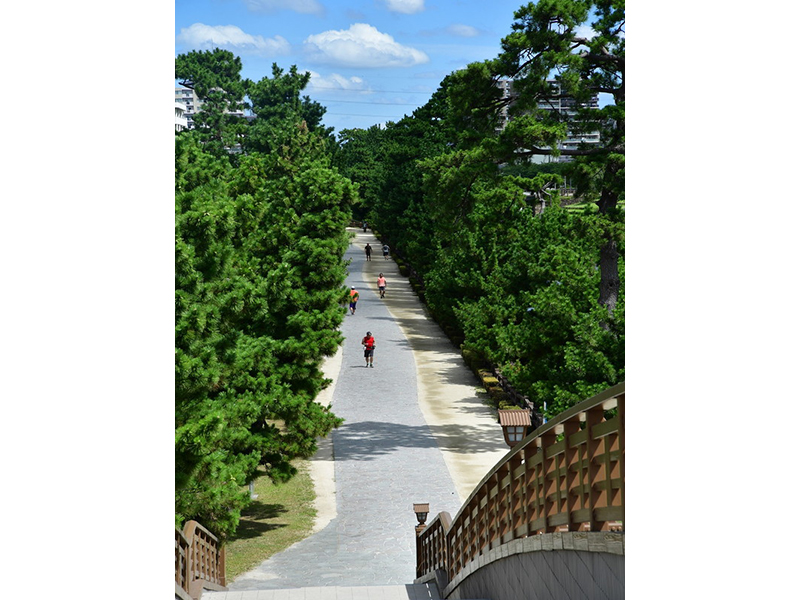
These twelve cities and towns and thirteen places of scenic beauty related to Matsuo Bashō’s “Oku no Hosomichi” have been recognized as influencing the scenery and lives of future generations, while preserving the elegance and atmosphere of ancient times. Collectively, these areas have been appointed as one of the top scenic spots in the country.
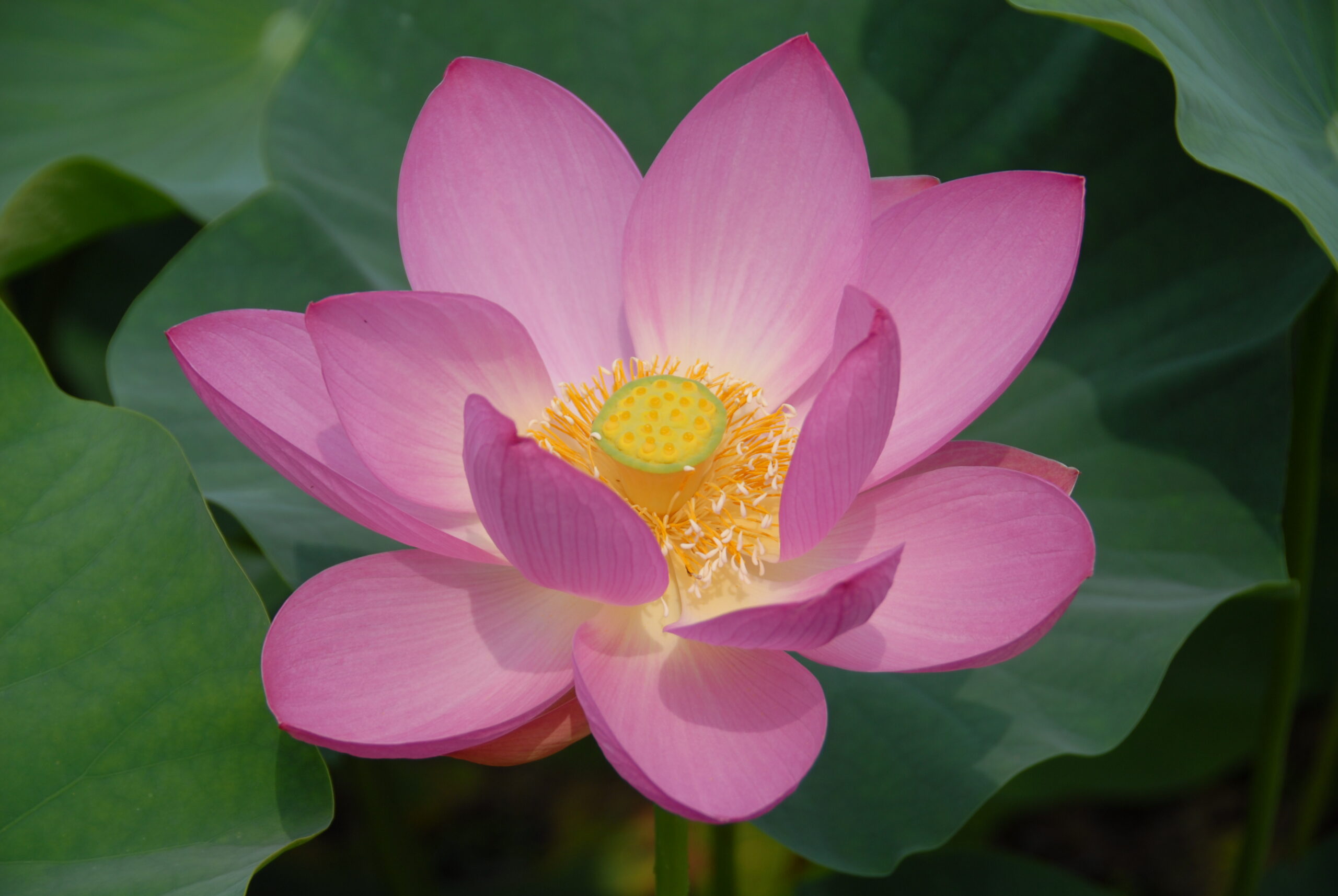
At the Haniwa building located inside the Saitama Kofun Group, anyone can experience making their own Haniwa with the help of an instructor. Creating a Haniwa takes 3 steps: molding for 90 to 120 minutes, drying for about a month, and finally heating the Haniwa in the kiln located inside the building for around 7 hours at 800℃. Once the Haniwa is completed, it can either be retrieved in person or be delivered and paid for on arrival.
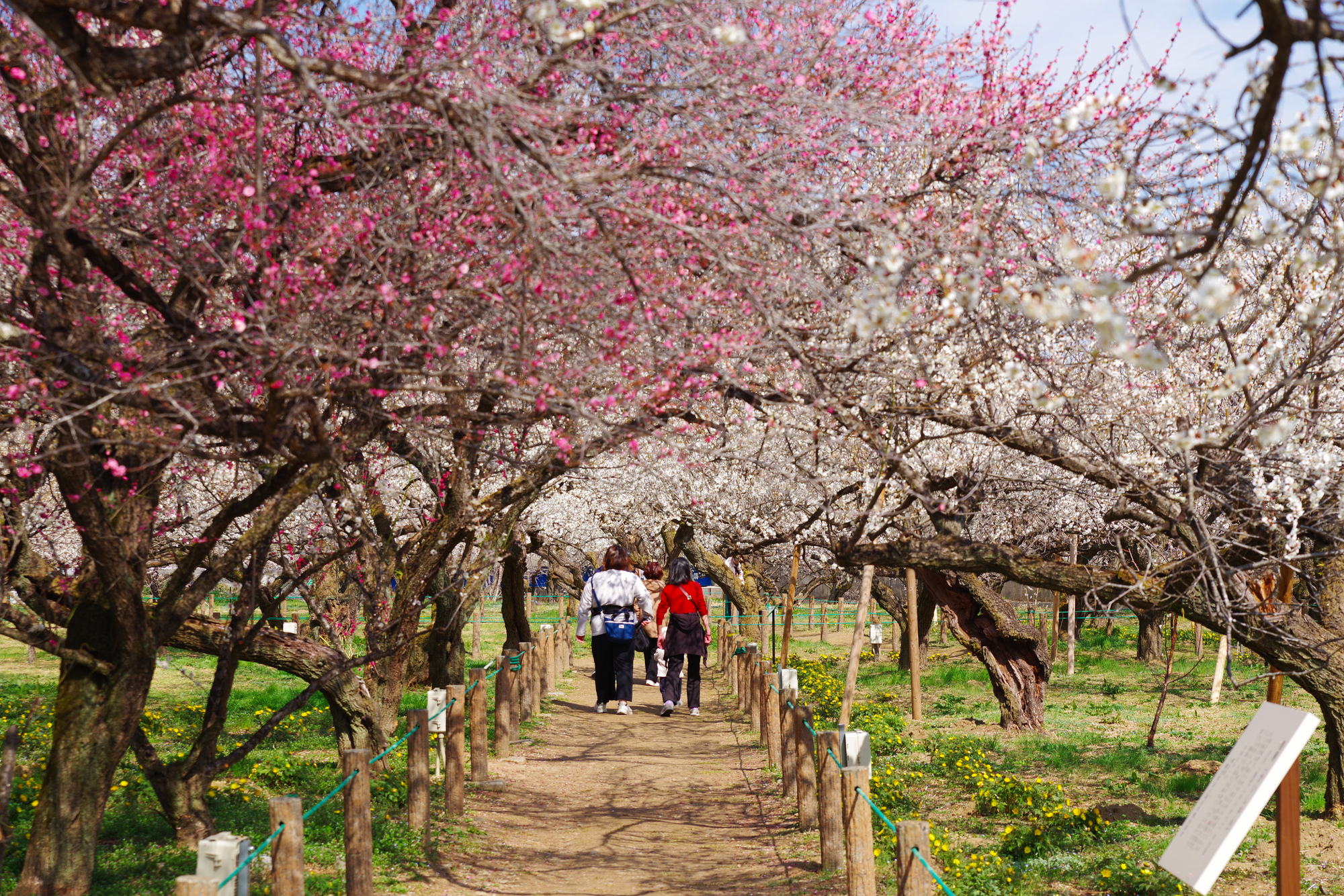
The Ogose plum grove dates back to the separation of Umezono Shrine from Dazaifu Tenmangu Shrine. Named after Heian period scholar, poet, and politician, Sugawara no Michizane, this grove of trees is recognized as one of the three major plum groves in Kanto. The park covers an area of around 2 hectares and is home to about 1,000 plum trees such as Shirakaga, Kobai, Koseno-ume, and most notably an ancient plum tree called Kaisetsu, estimated to be 650 years old. The Mini SL steam locomotive train running through the park is also rare within Japan. Around 20,000 plum trees, including the surrounding area, are in full bloom during peak season.
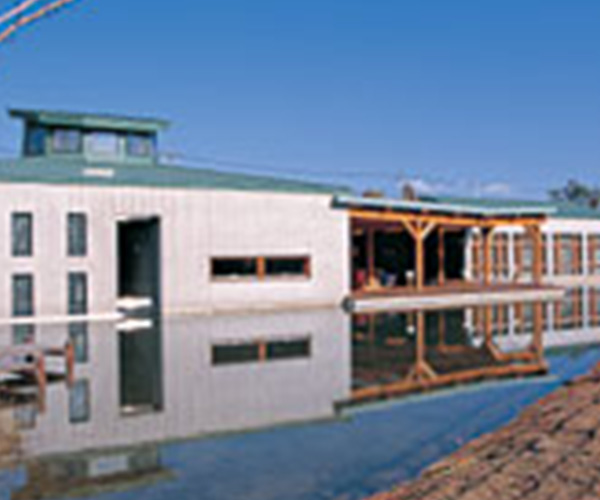
A museum based on the nature and culture of Namegawa Town and utilized as a center for gathering the latest information on these topics. Research efforts related to the artificial breeding and ecology of the Tokyo bitterling, a freshwater carp native to Japan and designated as a national treasure, are also being made to realize its reintroduction into the wild.
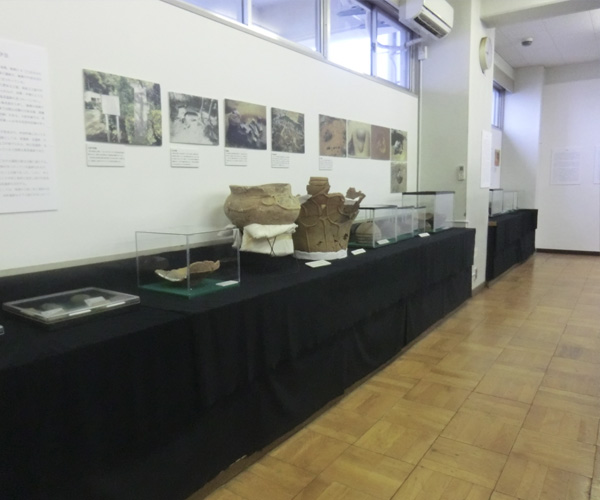
Visitors can learn about the rich nature and national treasures of Ina Town through the comprehensive exhibitions on local nature, geography, history and folklore on display. This museum moved to inside Ina Municipal Minami Junior High School in April 2016. Feel free to stop by, view the exhibitions and deepen your love and understanding of the wonderful Ina Town.
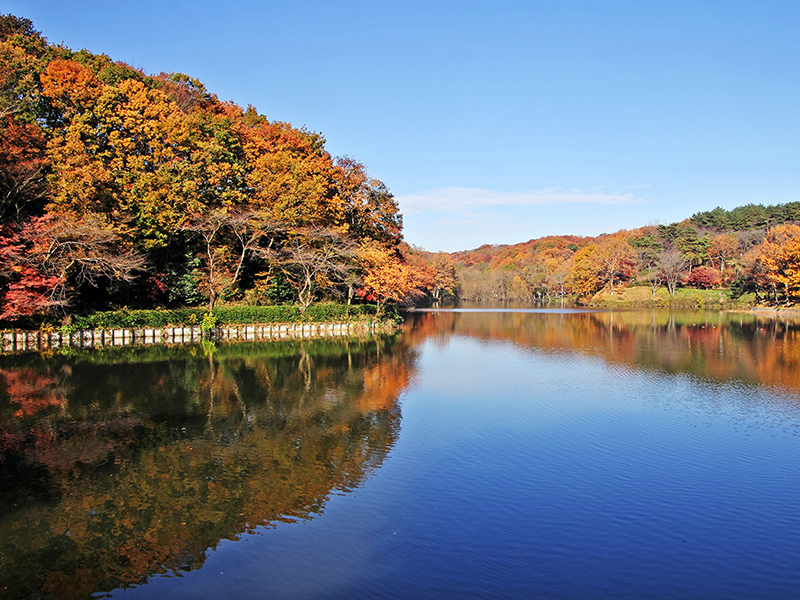
Yoshimi Town is dotted with man-made swamps, which are reservoirs built for rice paddy cultivation. Lake Hatcho is one such man-made swamp with an area of about 52,000 square meters. The kanji character for "Ha" can mean both "eight" and "many." Since several "eights" together has a catchy sound, there are historical expressions in the Japanese language which repeat the number eight to mean "many," such as "happyaku yacho" (many towns in Edo) or "happyaku yabashi" (many bridges in Osaka). Lake Hatcho used to be called "Hatcho Hattan no Numa" (one town block and 8,000 sq.meters) as a play on these expressions, but since the surface area of the lake isn't technically that big, this name isn't in use anymore.
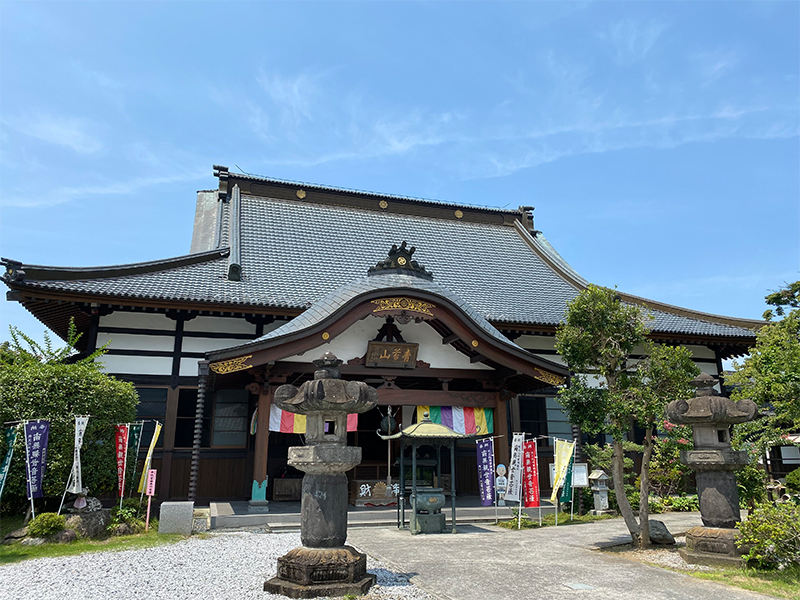
Mt. Seitai Hōchōji Temple, the seventh sacred site and temple, is called Ushibusedo, and the main deity is the eleven-faced Kannon. The eleven-faced Kannon was originally located at Ushibuse in the third ward of Negoya. Due to a disaster in 1782, it was moved to the main hall of Hōchōji Temple, where it has been enshrined ever since. Hōchōji temple is called "Fudasho No.7," also "Mt. Seitai," and it follows the Sōtō school of Buddhism. The temple was founded by Ryodo Kansei, who passed away in 1606. The founder of the Buddhist sect here was Shigekata Uchida, the second generation head of the Uchida family, and the Uchida family is said to be of the Fujita lineage, after adopting Hōjō Ujikuni as a son-in-law.
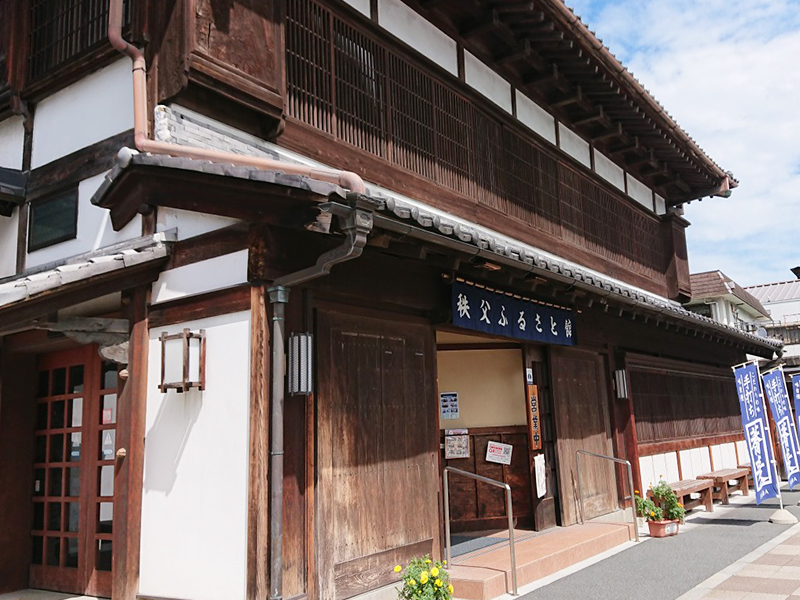
This store was originally the main building of a meisen silk wholesaler that prospered in the Taisho era. It has now been restored as a tourist center that also displays and sells local products. You can also try out the local cuisine at the soba noodle shop!
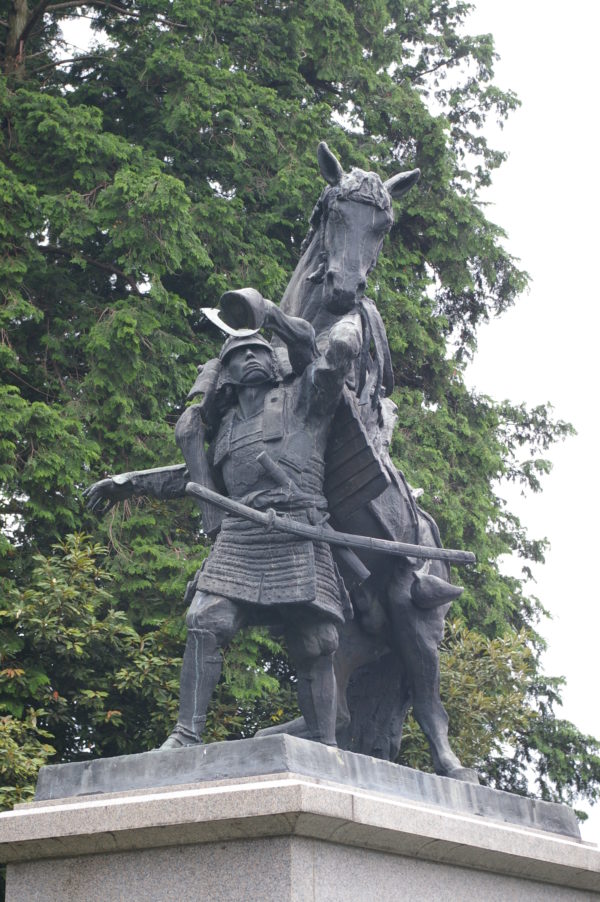
This is the site of Hatakeyama Shigetada's mansion, which is maintained as a park. In the park there is a five-story pagoda, said to be the grave of Shigetada and his vassals, a well said to be where Shigetada had his first bath after birth, and a bronze statue of Shigetada himself.
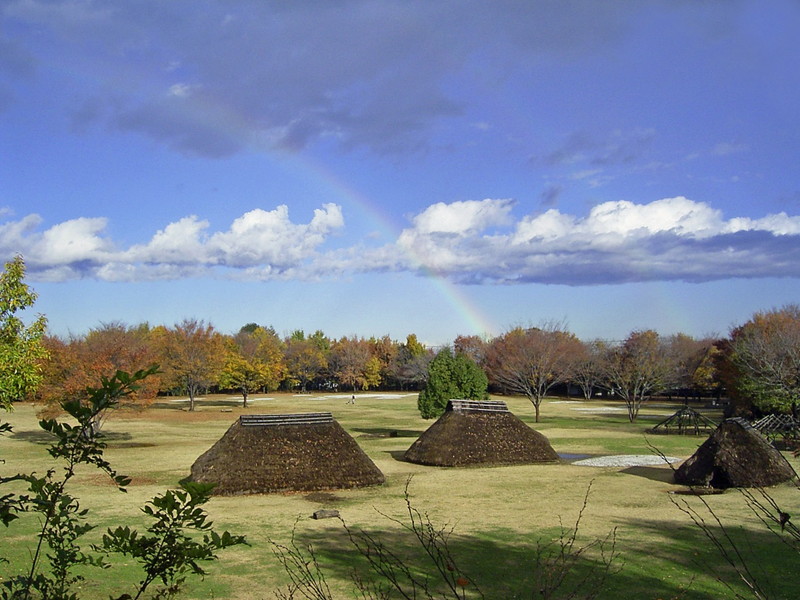
Mizuko Kaizuka Park covers roughly 40,000 square meters and was built to protect and utilize a historically designated site of midden (ancient waste collection spots) significant to the first half of the Jomon period (approximately 5500 to 6500 years ago). The size of the site represents the original ancient village, a path spanning 582 meters encircles the park, and 5 pit-houses (shelter houses built into the ground) and the Jomon era forest which surrounded the village have been restored. At the exhibition hall, excavated dwelling sites have been replicated, demonstrating how the ancient people lived at that time utilizing the midden. There is also an adjoining archive museum displaying artifacts unearthed from the city's ruins, with stone tools from the Paleolithic era roughly 30,000 years ago, designated cultural property Jomon pottery (nicknamed “flying squirrel-shaped pottery” ) unearthed from the ruins of Hazawa, an iron sword and a glass bead from the beginning of the Kofun period, and numerous other artifacts representing the primitive and ancient times of Fujimi City.
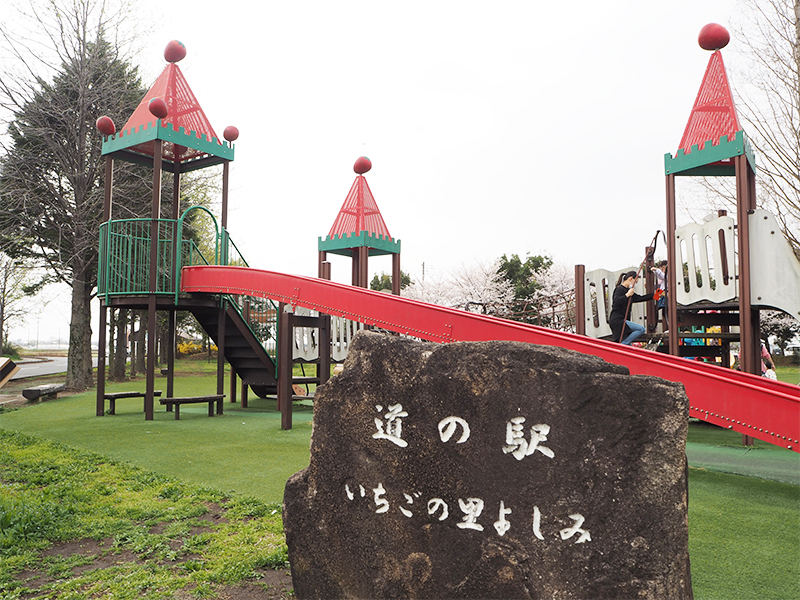
This roadside station, with a play tower designed to resemble a strawberry castle, is easy for families to stop by. Goods such as fresh dorayaki made from Yoshimi grown strawberries are available for purchase. It is also a popular place to take a break and enjoy a delicious soft-serve ice cream.
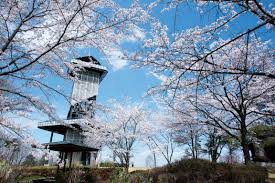
The observatory at Mt. Ninomiya is located at the town's highest location, at an elevation of 131.8 meters. From this observatory, you can enjoy the far-off Mt. Asama, Mt. Tanigawa, Nikko Mountain range, Mt. Tsukuba, and Chichibu mountains, and from the top floor you can get a view overlooking the skyscrapers of Shinjuku using a free telescope. If you're lucky, you can even see Tokyo Skytree! When flowers such as azaleas are bloom, this area is perfect for a lovely stroll.
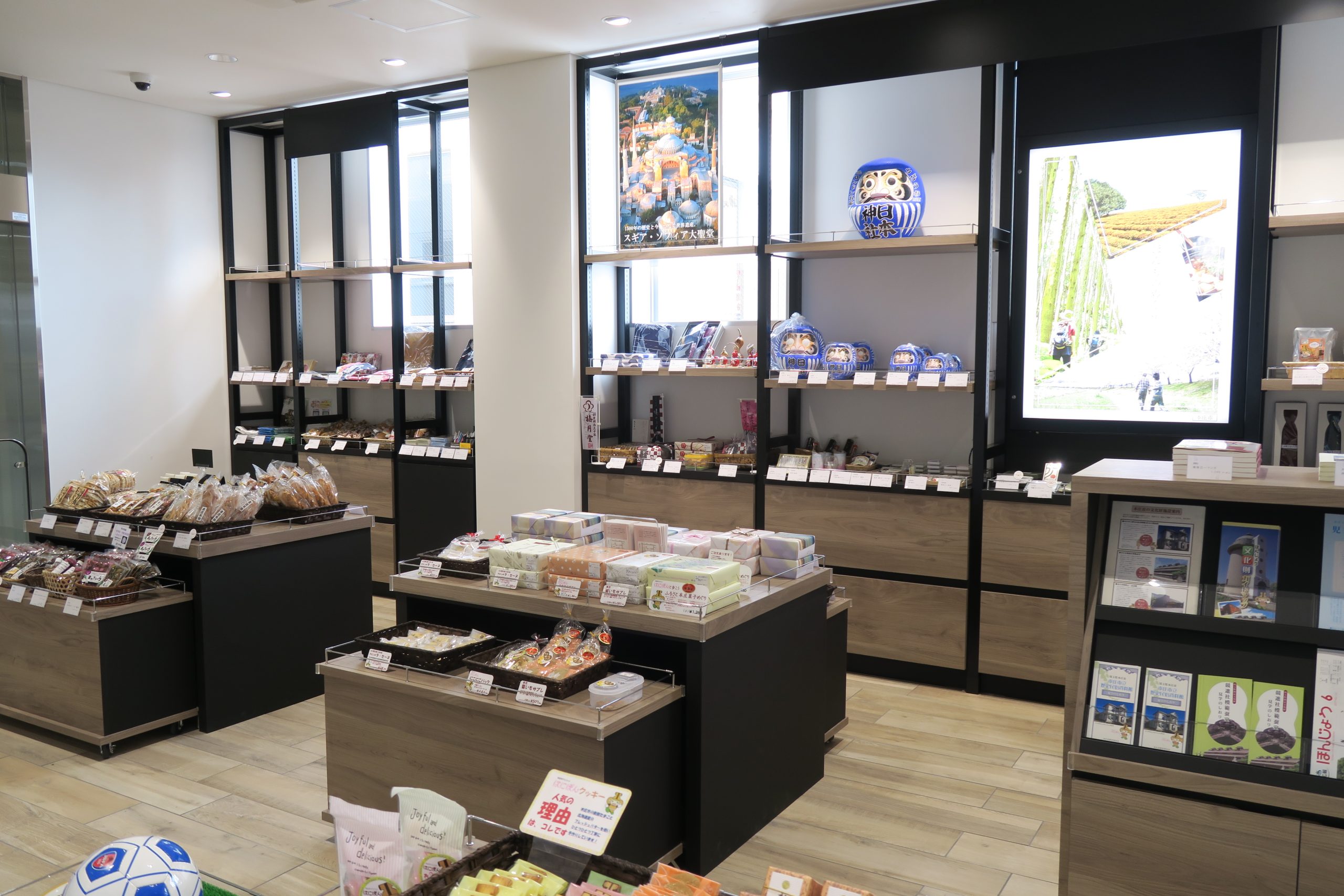
This is a tourist information center located in Honjō Station of JR Takasaki Line. Visitors can obtain tourist pamphlets and information regarding the city and purchase Honjō City’s souvenirs. Sweets and Japanese goods recommended by the Honjō City Tourism Association and Honjō Kasuri silk are also available.
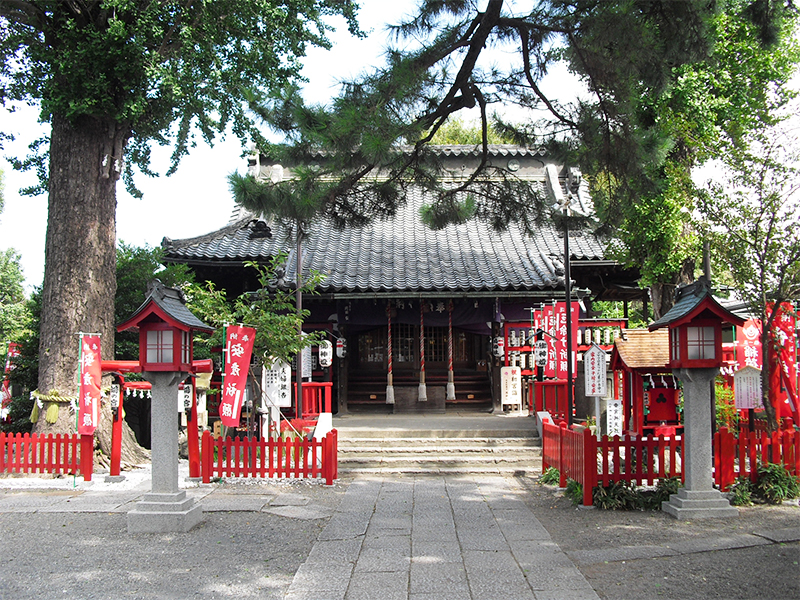
This is the main shrine of Konosu City, where the legend of the konotori (stork), also believed to be the origin of the cities name, has been handed down to this day. In 1873, Raiden Shrine, Kumano Shrine, and Hikawa Shrine were combined to form Kou Shrine. At the end of the year, they hold a Tori no Ichi fair (festival celebrating good fortune and business prosperity).
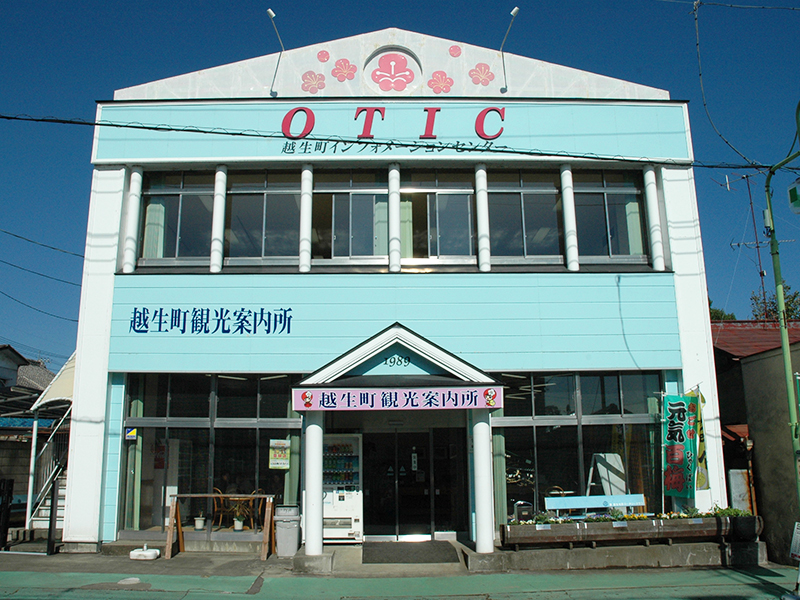
Located immediately next to the Ogose Station West Exit, this facility is used by many as a rest spot and meeting place, as a rendezvous point for hiking and to purchase souvenirs and light meals (rice balls, pizza, coffee, juice). There is also a free shuttle bus to SPA O Park OGOSE that departs from in front of the facility.
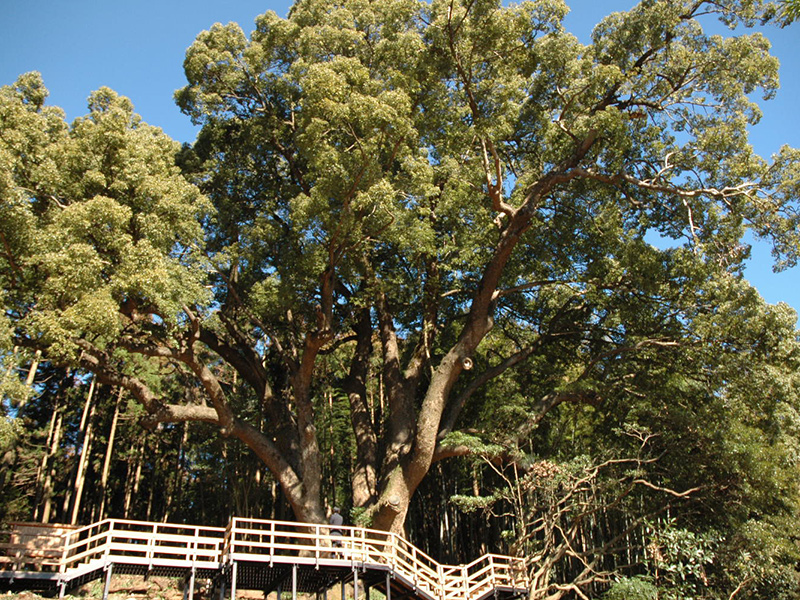
Ranked 16th in the 1988 Japan Big Trees Ranking, this giant camphor tree is certified 1st in the prefecture. The tree has a trunk circumference of 15m, a height of 30m, and is over 1,000 years old. The tree canopy is also a magnificent sight to see. It is designated a natural monument of the prefecture.
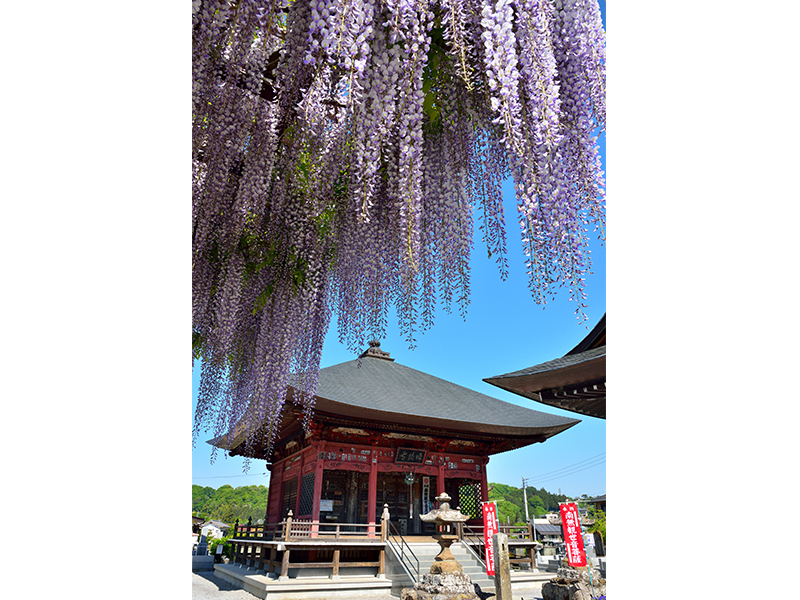
During wisteria season, you can enjoy vines of purple wisteria flowers descending from the trees in the precincts of Gokado Temple on Mt. Ogawa. Magohachi Honma, who built the temple, spent a night discussing the art of waka poetry with a traveling monk to finally master its secrets, and thus named the temple "Gokado" (words and songs temple). According to legend, the monk was said to have been the incarnation of Kannon, the Goddess of Mercy. The stone Buddha in the Koshinto pagoda on the right side of the hall is one of few existing in Chichibu. Collectible goshuin seals are available at Chokoji Temple, about 250 meters away.
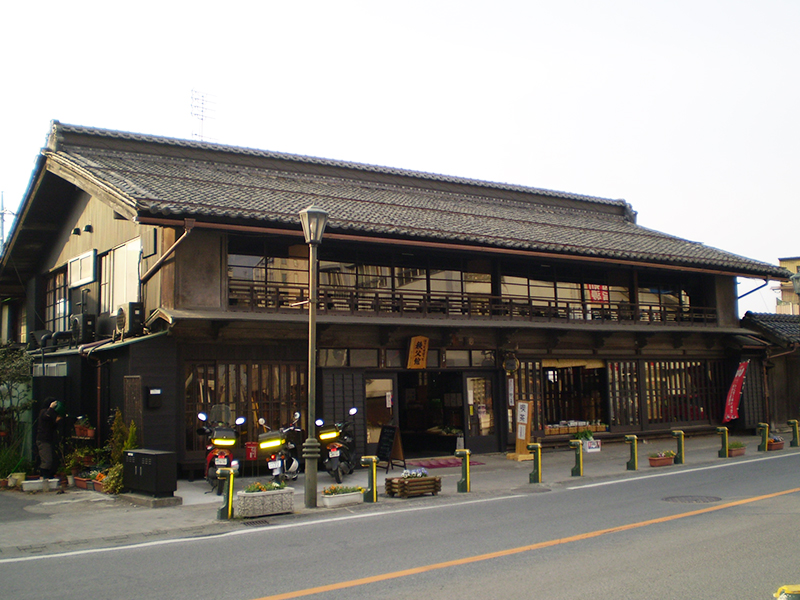
This facility is a center for socializing and tourism established in the early Meiji period merchant's inn, "Chichibu-Kan," which was renovated in a way to preserve its original appearance. The first floor is a free rest space with a large irori (sunken hearth) surrounded by rental boxes where citizens can display and sell their handicrafts and ceramics. Whether you're searching for tourist information or would like mingle with the locals, we hope you will visit Hot Spot Chichibu-Kan!
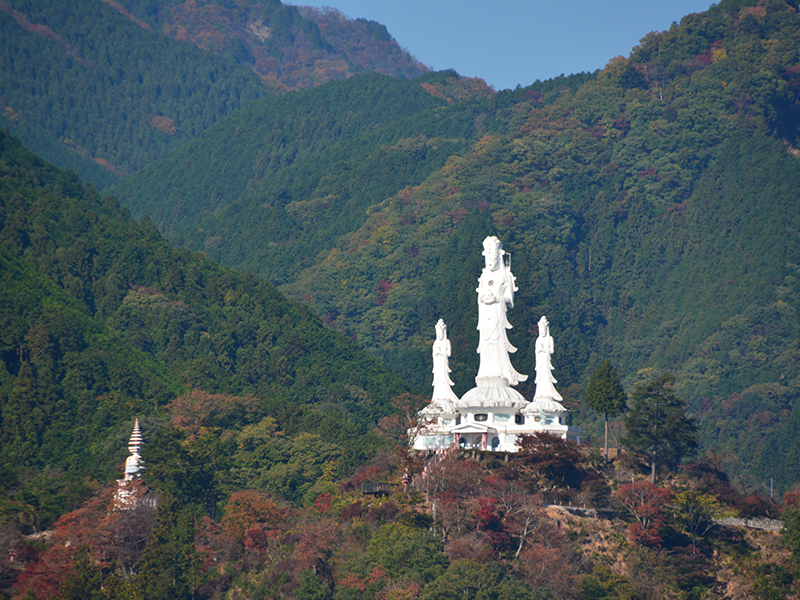
Selected as one the top 100 locations in Saitama, the Mt. Hakuun (Hakuun-san) Torii Kannon temple covers an area of around 30 hectares (the size of 6.5 Tokyo Domes) in Okumusashi/Naguri, where founder Yataro Hiranuma spent over 30 years erecting buildings in various places on the mountain. In addition to the symbolic Kusei Kannon (Goddess of Salvation) on the mountain summit, there is also the main hall, Gyokkamon Gate, Niomon Gate, Great Bell Tower, Heiwa Kannon (Goddess of Mercy), and notably the Genjo Sanzo Tower, famous for enshrining the remains of Genjo Sanzo, a Buddhist priest who appears in the famous Chinese novel "Journey to the West."
This site uses cookies to improve the user experience. If you continue to browse, you consent to the use of cookies on this site. Accept
CONTACT
